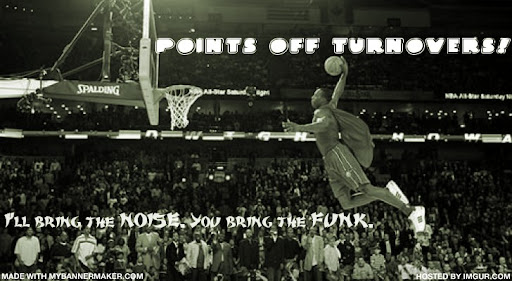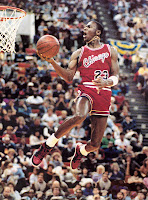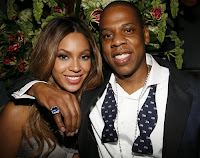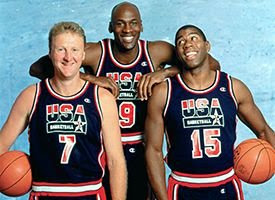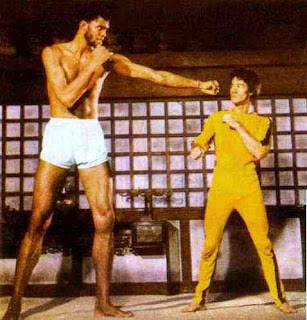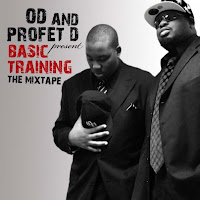 Joshua "OD" Mitchell, my good friend and current roommate at Howard University, walked into our dorm room one night with negative body language and a wearied look of his face. Josh was returning from his group study session with his classmates, and was presently talking to someone on his cell phone. After he hung up, I moved in to assess the situation.
Joshua "OD" Mitchell, my good friend and current roommate at Howard University, walked into our dorm room one night with negative body language and a wearied look of his face. Josh was returning from his group study session with his classmates, and was presently talking to someone on his cell phone. After he hung up, I moved in to assess the situation.“Yo, Josh…what’s up bro?”
“Mike, hey, I’m all right man…(looks down)…just getting back from this study session with my group.”
“How’d it go?”
(Josh lets out audible sigh…then displays a nervous smile)
“Do you think you’ll be ready for the big test tomorrow dude?”
At this moment, Josh begins to tell me about the study session. While he faithfully tried to talk positively about the experience, I surmised that our hero was leaving out some important story trivia. So, I confronted him.
“So, how solid are those people that you study with, anyway?”
(Josh lets out second long sigh)
“They’re okay.” (Josh then displays a noticeable wince)
If there’s one thing I can’t stand, it’s studying with crappy group study partners. These people almost always arrive after the designated meeting time, complain about their extenuating problems, and bring unnecessary chaos to the knowledge circle. A bad study partner is a parasitic leech in their pursuit of answers – choosing only to siphon answers from the people that actually took the time to study beforehand. I like to call it “audible intellectual plagiarism”.
Hey, bad study partners of the world – we know who you are. Don’t try to hide. Stop giving the intellectual art of the study group a bad rap.
Honestly, a bad group study partner is one step above that person who emergency calls/texts you right before bed to ask you to answer every single possible question before the test. (You know what I’m talking about.)
I decided to loosen Josh up by outlining for him my “personal guide to successful studying.” Once I finished deconstructing my study routine for him in enjoyable but verbose Mike Benjamin fashion, I realized that sharing my tenets of triumph with my Points Off Turnovers blog crew wouldn’t hurt. It’s an welcome intermission from the “Mo’ Better Hoops” series for me…and a foolproof study guide for you. In science, they would call this a “mutualistic relationship.”
(See how I’m dropping that science on you? And just when you thought all English majors would become high school teachers like Ben Stein…)
Without further ado, here’s Mike’s Personal Guide to Successful Studying!

Take a good look at this burger. Doesn’t it look delicious? Don’t you just want to print a copy of it from your printer and stick it to some empty wall in your room? Or better yet, why not just go ahead and eat the paper? Come on…you know you want tooooooo…
Okay, stop ogling this burger like a Sports Illustrated swimsuit model. I don’t want to see you guys react to this entrée like those girls from the Burger King commercials did. It’s just food people. You’ll be hungry again later.
For those of you that have been reading my stuff for a while now, you know I love using analogies in my writing. When I heard that they eliminated the analogy section from the SAT’s, I wept secretly while watching the Diary of Anne Frank marathon on AMC.
Reading a Mike Benjamin column without an awesome analogy is like eating a bowl of Corn Flakes cereal without milk. Sure, you can do it, but why would you put yourself through the torture? In order to understand my study routine, I’ll be using the recurring analogy of this hamburger to stimulate your senses and provide you greater understanding.
So, let’s dig in!
STEP 1: Make sure you’ve got the bread.
As any Texas-born American with clogged arteries can tell you, it’s impossible to make a great cheeseburger without bread. (For them, preferably Texas Toast) While providing additional taste, this staple food also serves a multitude of functions within burger construction:
First, the bread traps the burger’s ingredients (lettuce, onions, red meat, and ketchup) within a designated surface area. Similarly, your professor must announce your test at least a week prior to the given date and outline the parameters of the examination at this point-in-time. As a typical college student, your primary job is to attend your class at the scheduled time. If you do this, you will probably receive this information without issue. Just as I’d bet that every person born in Houston knows that red meat needs bread in order to be considered a burger, I’d gather that 80-99% of college students know how to gain this required test information from the average college professor. (Yes, I’m assuming that your professor’s not a complete jerk.)
However, there’s one miniscule sandwich detail that needs to be taken into account before moving forward with the burger construction process. Remember, we’re going for the best possible cheeseburger. Hereby, I claim that the best cheeseburger bread is always lightly toasted. Don’t you hate it when the bread gets stuck to the roof of your mouth, or when your fingers sink in the foamy part of the bread? I sure do. The toasted surface reinforces the bread, and gives it more durability and strength. Plus, this allows the individual to stack even more condiments of their choosing!
Before the professor tries to segue test discussion into further class information, make sure to drain as much additional test information from them as humanely possible. I’d try to limit the scope of their test (How many chapters will the test cover?), isolate main ideas that were covered (Will anatomy and physiology be on the test?), and by all means…keep them from adding extra junk to the exam (Will today’s lecture also be on the test? Because I don’t think that gives me enough time to study!) This also holds the professor to an unwritten contract with the class, a contract he/she can easily break if you go to ask these same questions during their office hours. Sometimes, the 5-10 minutes you spend hawking your teachers for answers have a huge pay off on test day.
(Side Note: For the record, the people who take the time to ask these sorts of questions are probably the people you need to study with. So go ahead and flirt your way into their study group. We like it when our egos are stroked a bit.)

STEP 2: Cook the meat.
This step, obviously, is the most important part of the burger construction process. When I first tried to grill hamburgers, I placed the meat in the middle of the frying pan, left it there until it turned brown, tossed it onto my (untoasted) bread and proceeded to bite it hastily. At that moment, I tasted one of the most horrid tastes known to man.
Burger blood.
My uncle Joe is the grill expert in our family. No, it isn’t because my aunt Darlene can’t handle the grill (in all honesty, she might be better than my uncle) but we’ll never, ever know. Why? Because my uncle loves to grill.
I learned my grilling ways from watching my uncle as a kid. Uncle Joe prides himself on grilling the best burgers for our family. He’s the guy that performs grill-duty at big parties. Trust, my Dad’s good on the grill, but my uncle is great. Here are the directions I learned by watching him grill burger meat (minus, his top secrets and fancy Uncle-grilling moves, of course):

First, thaw out the ground beef. Honestly, it’s not super-crucial to thaw out the meat prior to grilling, but it helps to speed up the grilling process. While the meat sits on the kitchen counter, go ahead and multitask. Move your clothes from the washing machine to the dryer. Beat your kid brother in NBA 2K9. Check your Facebook account…again.
In regards to studying, now’s the time for you to set up time with your study buddies. After class, organize a meeting time to review the information before the test. I like to make that review day the day before the test to give me time to show up prepared and dually serves as collective motivation for the group to straight up murder the test on the next day.
Second, set up your cooking area. Begin to preheat the frying pan (indoors) or the grill (outdoors). Line up all necessary utensils. Clear the area of any unnecessary protuberances and clutter. Similarly, I like to take the first full day (of a week-long study process) to just hang out, have fun, and enjoy myself. On the afternoon of the second day, I start to knock off any annoying lesser assignments and extraneous errands that will get in the way of the study process. In addition, my dad always taught me to set up my workstation in advance. For a lengthy paper assignment, I like to simply open up Microsoft Word and type in my heading. Seriously. To me, there’s nothing more intimidating than opening up a Word Document and seeing that damned black cursor flash on a blank white screen. (That needs to be my yearbook quote)
Third, pray. Seek God’s face. Before touching the meat, pray that the people who eat the cheeseburgers will enjoy them immensely and not get sick. Before you study, pray that your teacher won’t throw any curveballs on the test, that you get a great seat in the classroom on test day, that your pen doesn’t run out of ink, that your nose isn’t running so you don’t have to snort and use your shirt as a boogey-catching device (yes, this happened to me on my Senior Comprehensive Exam), etc, etc.
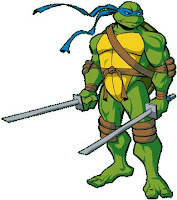
Fourth, divide the ground beef into patties and place them on the grill. When you first touch the information, try to divide your test into set topics or concepts. Hey look, your study task is instantly less scary! YEA! This makes the knowledge easier to handle and retain. That’s why Leonardo is always a better fighting Ninja Turtle than Donatello (swords are wayyy easier to handle than a bo staff).
Five, flip the patties carefully and poke with a fork. This allows all of the burger blood runs out of the pattie to ensure maximum cookage. Don’t poke it too much though, because you don’t want to dry the meat out. In relation to your study, make sure to find all of your test topics in the textbook (flipping) and translate the words into a language that you understand. My friend Daniel Gilmer (currently a Howard Hughes Research Fellow) used to write acrostic poems with his notes. (Yup, a non-English major using English major strategies...lol)
This entire process should carry you right to the group review day.

STEP 3: Add the cheese.
We’re almost done cooking the burger! But don’t forget…we’re making a cheeseburger! We’ve got to add the cheese to give it a chance to melt atop our browned burger meat. Before you meet with your study group, I’d suggest going through all of the tedious notes and work you’ve done. Here’s the perfect time to create flash cards or write a clean copy for better understanding.
STEP 4: When cheese melts, put cooked burger on bread.
Annnnnnd, we’re done here. Tell your kid brother to get off the sticks and set the table. By the way, look at the time! Let’s go meet up with your study partners!

STEP 5: Add lettuce.
Allow me to copy and paste exactly what I said in Step 2-1 about study the purpose of an intellectual study group (Heh, 2-1…it’s like the name of a level in Super Mario 3):
Isn’t that exactly what you did before getting to the study group? Awesome!“I like to make that review day the day before the test to give me time to show up prepared and dually serves as collective motivation for the group to straight up murder the test on the next day.”
The purpose of the intellectual study group is three-fold. Study group members should reinforce each other’s already studied knowledge, fill any outstanding informational holes (lettuce covers entire bread), and should motivate other group partners “to straight up murder” the test on the next day. The study session should take around 1 ½ to 3 hours (depending on the work load/size of the cheeseburger).
(Side Note: That’s why when dead-weight studiers are so hurtful to the study process. You end up wasting time feeding them information that you never get a chance to check to see if there are any informational holes. A dead-weight studier is like someone who hastily snatches the meat out of the freezer, zaps it in the microwave for about thirty seconds, and proceeds to shove it down their throats in a hurry. They’ve basically just eaten a raw, barely-warmed burger on soft bread without ketchup. Why the heck are you wasting your time with them?
(Oh, that’s right…it’s the hot girl from the cheerleading squad. It’s the diesel guy from the football team (yes, I know I’m over-generalizing here). It’s your good friend from your hometown. You can’t leave them hanging, can you?)
This is always a tough spot for me, because I love to help people. But in my book, they made a conscious choice (circumstances pending) to skip out on the hard work to eat your cooking. If there are extra burgers, I’m always willing to share. But if not…you’re on your own, pal. You’ve got to make the tough decision to prepare yourself for the hard test tomorrow. We can’t have you completely burned-out before seeing the test, okay?

STEP 6: Add onions.
Make sure to get a good night’s sleep. You need to exercise your brain at 100% for the test, so lack of sleep can’t be the issue here. When you hear the ringtone or text chime of your emergency panic study buddy (the guy who missed the session), hit ignore and roll over. Trust me, it’s just better that way.

STEP 7: Add ketchup.
Wake up at least an hour before the test to eat a good breakfast. Go for light carbohydrates (crossiants) and nutritious choices. But don’t eat anything that may lead to the hazardous “afternoon lull” (aka “the itis”).

STEP 8: Add a trace of salt and pepper.
This is my personal step for optimum deliciousness, one that I picked up from my sister and the fast food Godsend – Checkers. I propose that a trace of salt and pepper adds a certain extra kick to the whole concoction. Similarly, I bring an couple of extra pens/pencils to the test site to avoid the disastrous ink failure/pencil break situation (explained in 2-3).
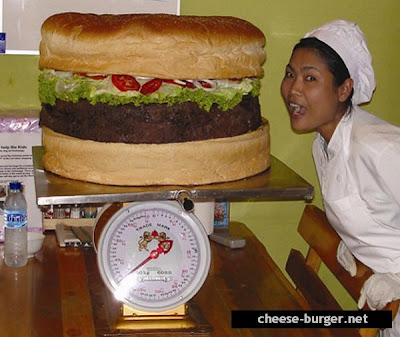
STEP 9: EAT!
If you prepared correctly, your test preparation (burger) should match up perfectly to the test paper (empty stomach) of your professor. However, some professors just don’t know how to cook up a test (and I’m not telling them). But more often than not, some professors don’t want to make the test unbearable for the median of the class (bell curve theory). This means that you’ve over-studied for the exam (five burgers for four people) and there’s extra information that you didn’t even need!
Wait, don’t toss that out! There’s plenty of room in your fridge (brain) for leftovers!
Was that a fun ride? Lemme know what you thought in the comments!
(Now, I’m getting kind of hungry...GOTTA EAT!)
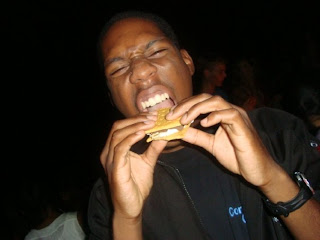
Michael A. Benjamin, II is a Senior English major at Howard University in Washington, D.C. He can be reached at mikebenjamin09@gmail.com. Peace.
